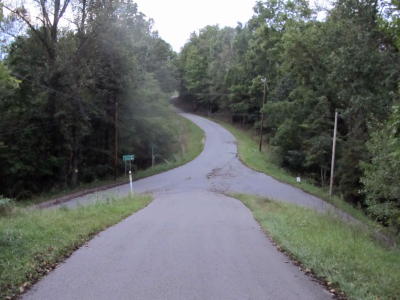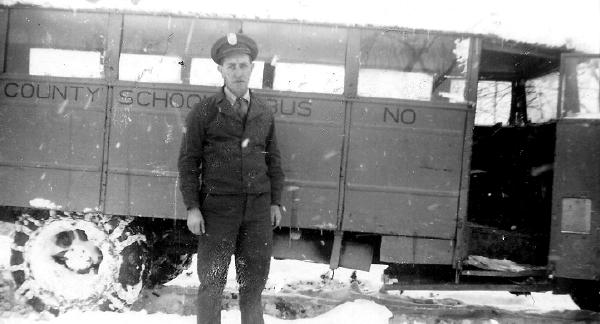
Students once clamored to bus stop at the Forks of Hur,
By Bob Weaver
The old bus stop house stood precariously on a mound of red clay above the Rowels Run Road at the four-way intersection at Hur, an easy target for ornery boys to tipple on Halloween.
Constructed of heavy material in the early 1930s, it survived about three decades of toppling to be reset to its faulty moorings, a shelter from the elements for school kids who walked for miles from the country ridges and hollers.
The large numbered Slider family had only to stumble over a steep hillside to catch Kelsey Dawson's homemade bus, but others came from a few miles away, the Husk Ridge, or from down on Buckhorn or out the Kerby Ridge.
I walked down the hill about one-tenth mile, with my faithful dog Blackie trotting along for all twelve years of public school, to be greeted by him in the evening.
During the 1940s and early 1950s, it was not uncommon that fifteen students arrived at the bus stop just after 7 a.m.

Joker resident Kelsey Dawson ran his home-made
bus on the long bus route through the 1930s-1940s
The original bus was "custom-made" from an International truck, an extended body and elongated benches for seating.
Its most memorable feature was the lack of adequate heat, a small heater keeping the bus driver warm on cold winter days, while the rest of us huddled closely in our bundled clothing.
When the weather was bad - rain, snow or ice - the bus arrival time was unpredictable. Kelsey had a long route, stretching to Annamoriah, Joker and Cremo, the country road often being in the creek-bed and prone to rising water.
On cold winter days, the boys would build a large wood fire at the bus stop.
I tended to ignore my grandmother McCoy's school stories about walking long miles, long before motorized transportation, in the snow and rain with her lard bucket containing a hunk of pork and cornbread.
The winding route continued from Hur up Barnes Run to Mt. Zion, for smooth sailing on the black-topped Rt. 16 into Grantsville.
The bus stop was often a place of recreation and loitering. On bad weather days it was often an hour late, while other times it didn't come at all.
School was never closed. If you got there, fine, if you didn't, that's the way it was.
The travails of winter snow on the torturous Joker Hill was a challenge for Kelsey and later drivers like Clarence Cooper and Ersel Husk. The winding hair-pin turns required bull-dog low and the assist of chains and butt-tightening driving skill.
When the bus would start slipping and sliding, Kelsey would load-up with an extra chaw of Mail Pouch, determined to make the trip. When the bus would slide into a ditch, unable to make it further, the boys would take Kelsey's axe and cut wood for a warm fire, suitable for hovering.
There were few discipline problems on the bus, but when they occurred, Kelsey would just stop the bus and boot the offender, winter or summer, while the students continued to group sing country music and hymns, and at least once a week stopping at Tom Moore's Store at Mt. Zion to get ice cream cones.
My friend Al Ball said of his generation, most barely had a change of clothes, while others had mother's who stitched and sewed some durable garments for them to go to school.
I had little awareness of poorness, but indeed most of us fell below the poverty line, a statistic non-existent at the time.
This week I propped myself on a road bank above the the old bus stop at the Forks of Hur. There was no clamor, no bustle.
I recalled Bernice Dobbins, who had a tendency to throw rocks at me. Later, after long restraint, I pushed her into a mud hole.
Bernice, now deceased, was one of many I recalled with fondness, including the large Smith family and the children of our crank'em up telephone switchboard operator, Leona Sturm.
Leona's daughter, Carolyn, slightly older, walked to my house to accompany me on my first day of school about 75 years ago, and later, I did likewise for Charles Stevens, who lived out my road.
Most of the kids went into the big world far from the hills of Sunny Cal, hardy citizens with work genes, finding jobs and raising families, many are now resting in the eternal.
| 


